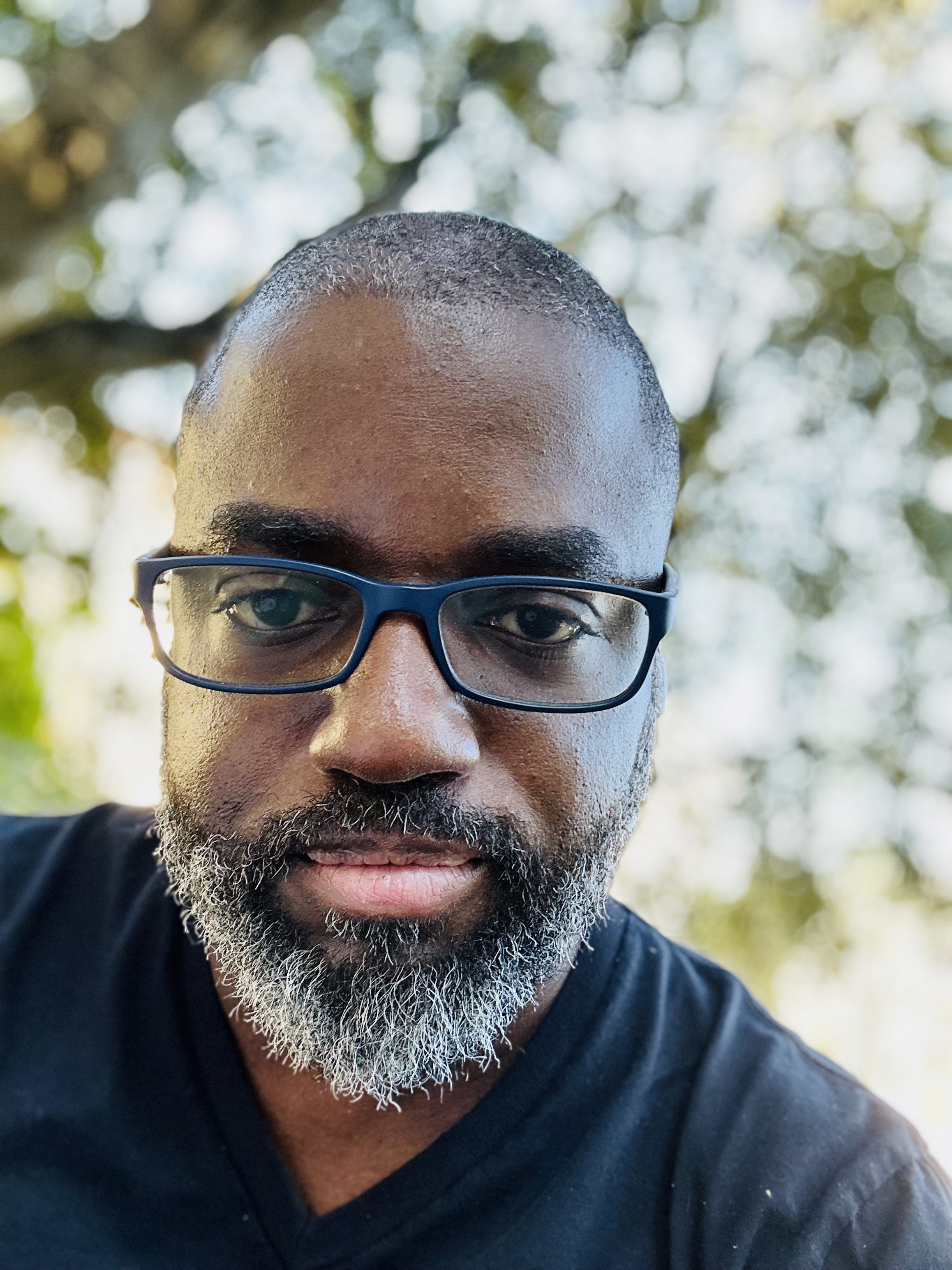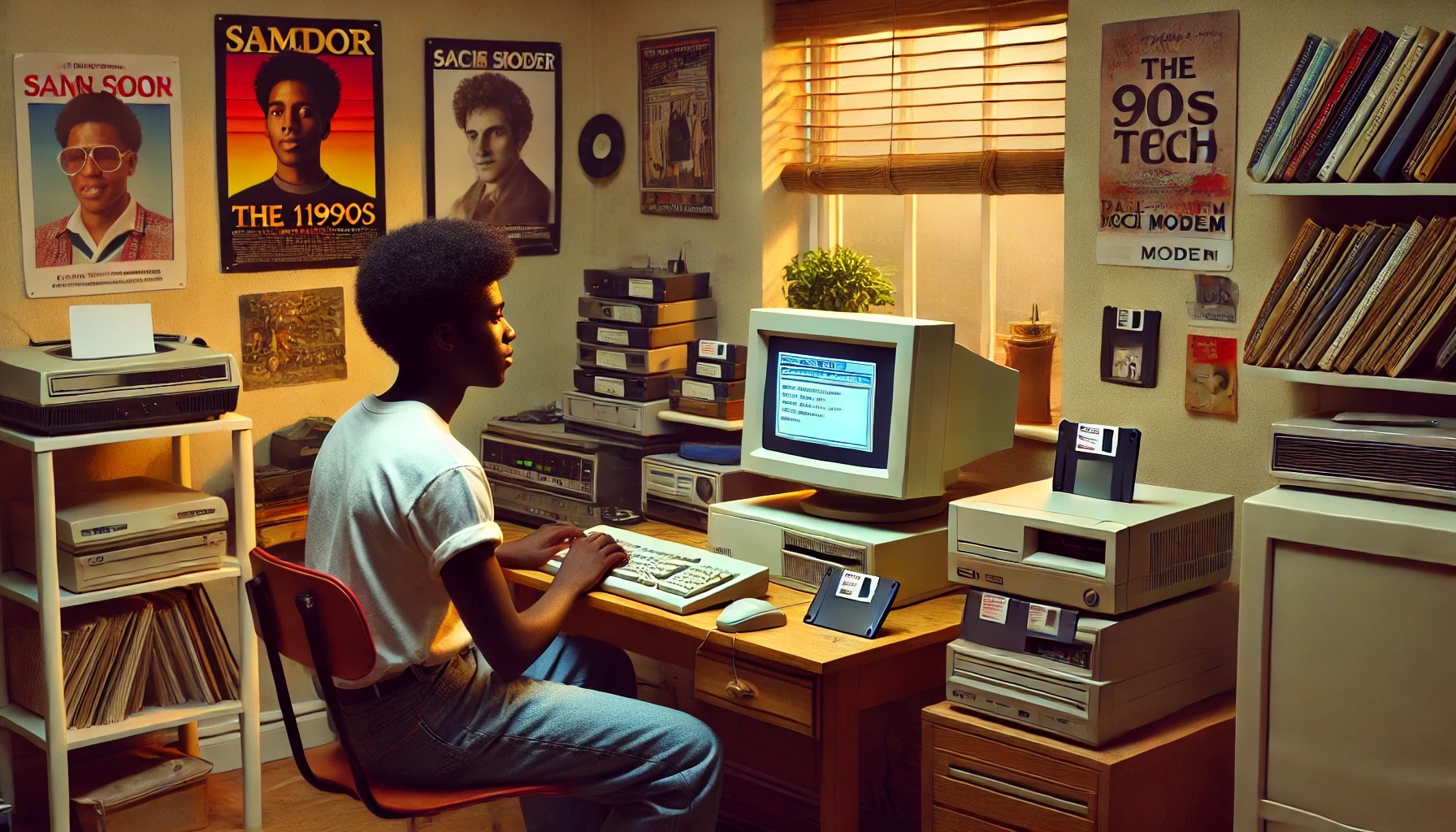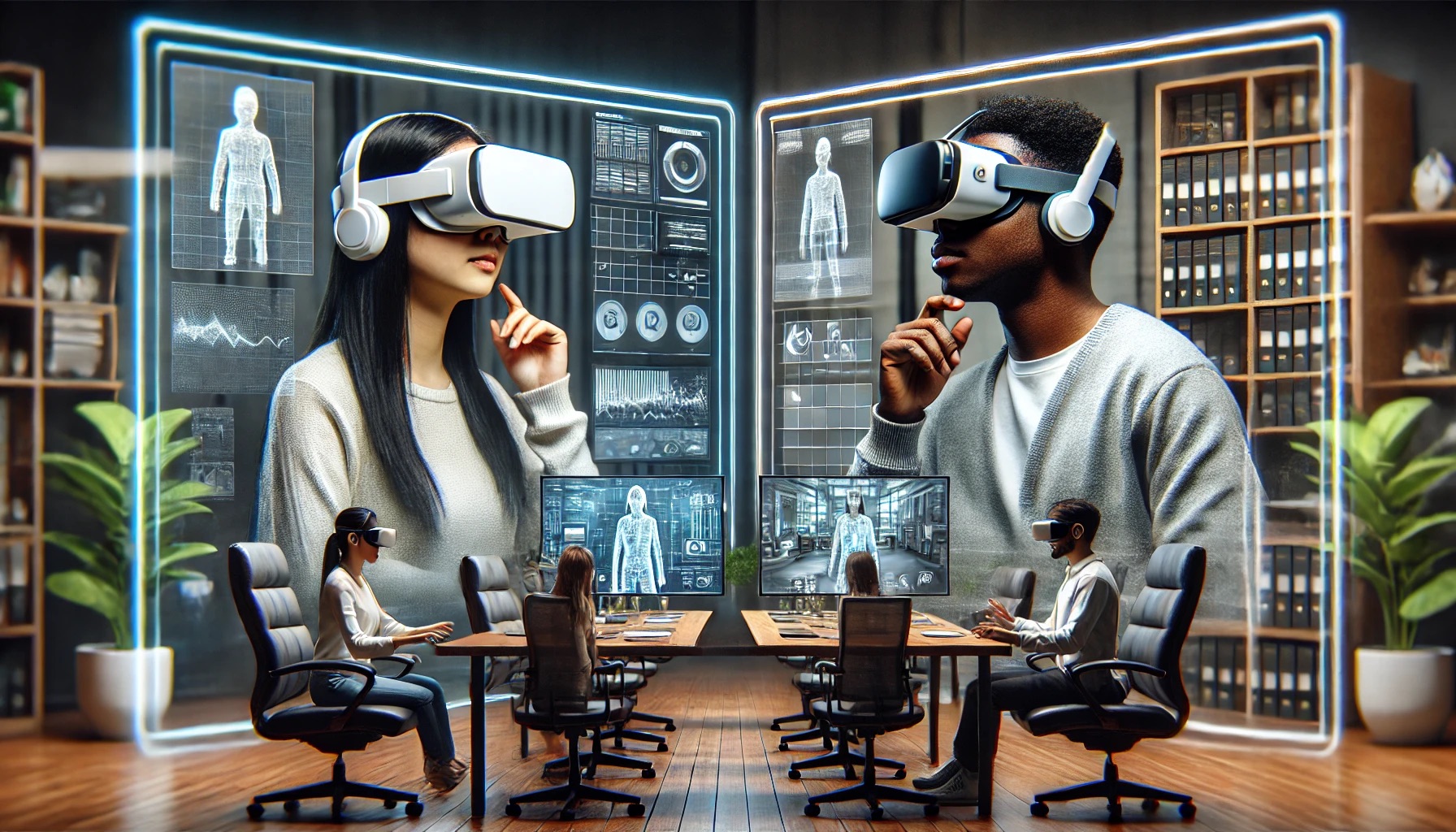Engineering Leadership: Embracing Culture, Innovation, and Empathy
 Kurt Collins
Kurt Collins
I’ve seen a lot in my 30+ years working in tech and learned many lessons the hard way. It’s time I give back to the industry that has given me so much. I’m going to start by sharing a little bit about my thoughts on leadership. This will frame an ongoing conversation about power that I think we need to have in our industry.

I had my first job in tech when I was still in middle school. I got a small contract to design and build a website for a small department at Rutgers University. Photoshop had just launched a few years before, and HTML 1.0 was hot off the presses. It was amazing to me that they needed me to build this for them, but it was exciting to be so bleeding edge that a major American university was willing to hire a kid. It was thrilling to have this kind of power at such an early stage in my life.
Over the years, I’ve witnessed the evolution of the tech industry firsthand from many different vantage points, including leadership. My first leadership role came in the late 2000s. From the moment my decisions started to impact people’s lives, both professionally and personally, I suddenly felt the weight of my power very differently, along with quite a bit of trepidation.
This unease led me down a deep research rabbit hole focused on leadership. I read many of the standard books, including:
The Art of War by Sun Tzu
The 48 Laws of Power by Robert Greene
The 7 Habits of Highly Effective People by Stephen Covey
How to Win Friends and Influence People by Dale Carnegie
Awaken the Giant Within by Tony Robbins
To my disappointment, The Art of War was the only one I could wholeheartedly recommend. It offers a practical approach to implementing game theory in wars that could readily be applied to real-world situations; that was invaluable to me. However, nothing about it taught me how to be a good people leader. Unfortunately, most other books I read fell into two unappealing categories:
Manipulation Techniques. I quickly realized that I am not a fan of manipulating those I lead. I prefer to inspire team members to join me in the trenches out of mutual respect and shared goals, not trickery. Building a foundation of leadership on anything except authenticity feels like a recipe for disaster.
Conformity to the Ideal. This particularly struck me as discordant because the idealized American business leader is often a White male with all of the privileges that typically accompany that identity. As a Black immigrant male, their life experiences did not resonate with me. This isn’t an issue of race; however, this is an issue of background, culture, and the inherent societal power differentials between the authors and me.
Realizing this, I sought a more personal and inclusive style of leadership – a journey that began in the late 2000s and continues to this day.
Building My Leadership Framework
At first I didn’t know what I was looking for in a leadership philosophy. My mother has been a business systems analyst for the better part of two decades, and she always emphasizes the importance of requirements docs. So, I decided to build my requirements. Following her example, let’s define what I need from a leadership philosophy.

Embracing Cultural Differences 🧔🏾♂️👱♀️👩🏽🧔🏼🙋🏻♀️
I was born and raised in Grenada (a tiny island about the size of Manhattan in the Eastern Caribbean). My parents and I immigrated to the United States a couple of years after the U.S. invaded my tiny island. I generally don’t identify with the solutions given to me by White male titans of industry partly because their decisions are based upon lived experiences that are fundamentally different from mine. The decisions we make, combined with those made for us, shape us as unique individuals. I saw little similarity between their choices and those I would have made.
I don’t want something designed specifically for Grenadians, either. While I started my life in Grenada, I have also lived in Washington, D.C., New York City, Boston, Philadelphia, San Francisco, Paris, Lisbon, and many other locations. These diverse experiences have taught me the value of flexibility and inclusiveness. Any leadership philosophy that I adopt needs to be flexible enough to accommodate my specific cultural peculiarities as well as the cultural uniqueness of my team members.
The irony is that I started this journey years ago with no inkling that COVID would force us all to participate in a global workforce. But here we are, and it’s clear how vital it is to recognize and respect cultural diversity in any leadership philosophy.
Supporting Innovation 💡💻💽🧑🏽💻🎮
While San Francisco was part of the epicenter of innovation known as Silicon Valley, no one had yet solved the problem of how difficult it was for a Black male to catch a cab. So, for the latter part of the 2000s, I had gotten in the habit of keeping three town car drivers on rotation to get around town. The added expense was worth it if it meant I was guaranteed a ride. Then one day, I got pulled into a focus group filled with Black male technologists where the sponsoring company was Uber, and suddenly, getting around town became easier.
I work with tech startups and entrepreneurs, and our environment thrives on innovations like Uber that solve real-world problems at scale. We constantly analyze our successes and failures, iterating not just on our work, but also on ourselves. To be honest, we don’t often succeed at iterating on ourselves, but the dream is alive in all of us. This, combined with the incredible amount of money flowing through the tech industry, fosters a culture of innovation and problem-solving that is hard to beat.
My leadership philosophy must support innovation by encouraging new ideas from anywhere, fostering continuous self-improvement, and nurturing a culture of adaptability. It should create a safe space for failure without fear and judgment, focusing on learning and improvement.
Supercharging Collaboration 👯♂️🤝👥🍻🤼
The last time I worked in an office full-time was in 2014, and there were specific reasons why I needed to be onsite. What I miss the most while working remotely is the camaraderie you get in person with your coworkers. Recently, a good friend and I began having impromptu virtual coffee dates with our new Apple Vision Pro headsets. These conversations go well beyond talking on the phone; the feeling is almost akin to hanging out with him in person in my home because his 3D persona (an avatar) is physically in my space. Technology can bridge the gap in remote collaboration.
In the tech industry, we work in a world where borders between nations are all but insubstantial. What started years ago as collaboration across borders for outsourcing has quickly morphed into the rise of digital nomads coupled with a thirst for finding talent anywhere it might exist.
A good leadership philosophy must enhance collaboration, even in a remote, always-online environment. It must nurture the blurred boundaries between work and home life, making collaboration seamless and effective. How we make the feeling of collaboration impactful in an online-only environment is a difficult concept to grapple with. We must do more than just utilize tools like Slack and Zoom. It’s even more important in today's distributed work environment that we get this right.
Cultural Humility: The Starting Point
In 1998, a new term was introduced into the consciousness by Melanie Tervalon and Jann Murray-García: cultural humility. As defined by those who coined the term, cultural humility is “a lifelong process of self-reflection and self-critique whereby the individual not only learns about another’s culture, but one starts with an examination of her/his own beliefs and cultural identities.”

It’s fairly simple to explain:
🤔 Start with knowledge of self. Focus on what’s within first. Examine yourself, your cultural assumptions, and your explicit and implicit biases. This is critical.
📝 Learn about others. Acknowledge the ideas, norms, and beliefs of other cultural groups. Then go one step further and embrace them.
🤝 Integrate steps one and two into your daily interactions. Make a conscious decision to build harmonious interactions in your life by using empathy and respect for all that you’ve learned about yourself and others.
Once you’ve done that, you just have to remember one more thing: do it every day. Cultural humility is a life-long commitment to examine yourself and those around you to build respect for differing viewpoints and ideas. Leaders today are navigating workspaces in the context of global unrest, regular economic instability, political activism at work, and many other existential crises. Constant re-examination is an absolute requirement. If you want to learn more about cultural humility and its impact on leadership, I recommend starting with Cultural Humility: A Concept Analysis.
Culture begins at home. Growing up, my parents chose not to raise me strictly as a Grenadian, but rather as someone with a global perspective. While there’s a lot of Grenada in me, there’s also New York, Paris, and the subculture of the early Internet (Internet Relay Chat and Usenet). And if you ask me about Gogo Music (from the Washington DC area), I could go on for days. These are just small parts of me that I constantly examine and question to better understand where my beliefs, biases, and expectations come from. This diverse upbringing has shaped my understanding of cultural humility.
While this is an interesting concept, it only covers one piece of the puzzle I believe is necessary to be a good engineering leader. By itself, cultural humility allows you to build respect for yourself and others; but there’s more required when leading a team. Not the least of which includes how you hold people accountable for their contributions to the projects you will all be collaborating on.
Accountability: The Key to Trust
I had the opportunity to work at a leadership development organization named Refound, where I gained a deeper understanding of Jonathan Raymond’s take on leadership. I learned quite a lot while working with Jonathan. I won’t delve deeply into his entire philosophy here, but I strongly encourage you to read his book, Good Authority. The core of his philosophy focuses on several key principles:
✅ Personal accountability. Each leader must place a premium on holding themselves accountable. This means being transparent, owning up to mistakes, knowing your strengths, and acknowledging your weaknesses.
📋 Set clear expectations. Your team members should never wonder what’s expected of them. As a leader, you must set clear expectations, give proper accolades when they are met and exceeded, and hold team members to account when they fail to meet them.
🗣️ Have authentic conversations. Engage in open, honest, and bi-directional dialogue. Be transparent with your team, provide genuine feedback, and be completely open to receiving feedback in return.
🫶 Empathy and connection. A good leader connects with each team member individually, understanding their motivations and challenges to help them grow as people as well as employees.
I’ve left out a few of his core tenets for brevity and to encourage you to read his book, but I want to focus on these principles because they are particularly important to me. I believe accountability and transparency go hand-in-hand. In our industry, we champion the transparency of open source as a model for software development, but we don’t apply the same principle to team development. It’s vitally important to be transparent with your team about who you are and who you aspire to be. By putting this out there, you force a level of personal accountability that breeds trust.

This transparency makes it easier to set clear expectations for yourself and your team. When they see the standards you hold to, it becomes easier for them to trust that you’re practicing what you preach. Setting clear expectations allows them to always know where they stand with you and the company. It also creates a transparent layer of communication within your team and across other teams you collaborate with. With all of this in place, having authentic conversations with your team members becomes much easier.
However, accountability and transparency do not mean throwing your team under the bus at every opportunity. There is a right way and a wrong way to approach these principles. The wrong way leans into the harsh side of accountability, often presenting itself as blame. I’ve seen this happen, and it left the person on the receiving end questioning their sense of self and how they were perceived by others. The right way includes a significant amount of active listening, empathy, and taking action based on the feedback received from all parties. This leads me to take Raymond’s incorporation of empathy and connection in a more radical direction.
Embracing Radical Empathy
Within the engineering disciplines, empathy isn’t exactly the first word you think of when referring to those who work there. I am primarily speaking of the tech industry when I say the following: as a historically male-dominated industry, empathy is not something we’re known for.

Radical Empathy is a new, action-oriented framework conceived by Terri Givens and focused on understanding and addressing racial divides and systemic inequities. Deep emotional engagement, self-reflection, and concrete efforts to create meaningful change are fundamental requirements of Radical Empathy. I emphasize the words “action-oriented” because it’s important to know that this framework is not just about understanding and feeling. It goes one step further; it is about acting on those thoughts and feelings.
The following is lifted verbatim from an introductory blog post on Radical Empathy written by Givens herself, but there are six steps to get started with the framework:
A willingness to be vulnerable.
Becoming grounded in who you are.
Opening yourself to the experiences of others.
Practicing empathy.
Taking action.
Creating change and building trust.
(You can learn more about Radical Empathy by reading Radical Empathy: Finding a Path to Bridging Racial Divides. If you care about issues of race in America, it’s one of many books you should read.)
From the perspective of a leader, there’s a lot to chew on here. Not a single one of the six steps mentioned above was significantly addressed in any of the books I started this blog post mentioning. Indeed, this framework was built to address racial divides. As an engineering leader specifically, addressing racial divides within my team is important, but it’s not even remotely close to the main requirements needed to have a functional and capable team. So let’s apply Givens’ framework towards engineering team management instead of race in society.
How do we combine the concepts represented by Melanie Tervalon, Jann Murray-García, Jonathan Raymond, and Terri Givens to give us a blueprint of how to be a good engineering leader? How do all of these concepts get us to embrace cultural differences, support innovation, and supercharge collaboration? Now, we’re finally getting to the point of my leadership meanderings.
Creating a Dynamic and Inclusive Engineering Culture
Let’s return to the core concepts I am looking to address: embracing cultural differences, supporting innovation, and supercharging collaboration.
Embrace Cultural Differences
We all contain multitudes. When we go to work, we’re often constrained in how we show up. That constraint may be self-imposed because we don’t feel like we can show up as our whole self in a work environment, or it may be company-imposed because we have some idea of how the ideal knowledge worker should show up at work. People of color and women know this acutely and have developed advanced methods, such as code switching, to navigate these environments. In reality, everyone code switches to some extent. Conformity exists in the workforce, perhaps less so today than 100 years ago, but it still exists.
The path to radical empathy starts with a willingness to be vulnerable to become grounded in who we are. Being comfortable with ourselves allows us to be vulnerable. When leaders show vulnerability, it opens them up to understanding the experiences of others. This is where cultural humility and radical empathy truly converge. As an engineering leader, embracing these principles can transform team dynamics and foster a more inclusive, innovative environment. Here are some concrete ways to practice these concepts in leadership:
🔍 Pay close attention to your biases and assumptions. If you’re human, you have biases and assumptions. You cannot eliminate them, but you can do your best to acknowledge and counteract them.
👂 Practice active listening. Listen more than you speak. Your team will have valuable contributions, but they need to know that you’re always going to hear what they say. Not only does this help you understand them from a cultural perspective, but it also helps you tease out the important ideas they impart.
🗣️ Exchange stories. We do this naturally as human beings. As a leader, it’s important to actively listen to the stories told by your team members. It’s equally important to share your own stories. Sharing stories will create a stronger bond between you and your team.
💬 Be flexible in your communication style. Some of your team members communicate better on Slack, while others are better in verbal conversation. Adjust accordingly to make sure your team members feel comfortable communicating with you.
Understanding and embracing cultural differences is the foundation of my leadership philosophy. It allows for cohesion, vulnerability, and cultural understanding within the team, enabling authentic conversation. It’s vital to have these authentic conversations come from a place of understanding and empathy. Otherwise, you run the risk of alienating yourself or individual members of your team.
Support Innovation
This all leads to practicing empathy and the second pillar of my philosophy: supporting innovation. I continue to emphasize the action-oriented side of empathy because this is very different from the passive version of empathy many of us are familiar with.

In the tech industry, innovation is not just a byproduct. It is a core job requirement of every employee. Every decision an engineering leader makes should support innovation by:
Understanding intentions. Recognize your own and your team’s intentions in every interaction. Ensure you distinguish intention from impact.
Critiquing ideas, not people. Critique ideas zealously, but support the individuals behind them. Accountability is key, but communication is critical.
Ideas can come from anywhere. Use the diverse experiences of your team to solve problems creatively. Personal experiences from outside of work can lead to innovative solutions.
We support innovation by accepting ideas wherever they spring from. We support innovation by critiquing them with zeal and encouraging others to critique even our ideas with an equivalent level of zeal. We support innovation by allowing people to share ideas with intention and focusing on the impact those ideas might have. Leaders must practice this daily and encourage their teams to do the same.
Supercharge Collaboration
Finally, we build a team infrastructure around collaboration. Communication and accountability are essential to fostering this. The importance of communication has been covered under Cultural Differences and Supporting Innovation, so let’s focus on what accountability brings to this conversation.

Accountability brings trust. When leaders hold themselves accountable, they build trust in themselves and trust in their team. When team members are held accountable, they understand that their work is valued and essential, leading to greater pride and a higher likelihood of on-time delivery. Trust supercharges collaboration, and accountability builds trust.
Our Responsibility as Leaders
Too often, we pour the energy needed for recognizing and exploring difference into pretending those differences are insurmountable barriers, or that they do not exist at all. This results in a voluntary isolation or false and treacherous connections. Either way, we do not develop tools for using human difference as a springboard for creative change within our lives.
— Audre Lorde, Poet
As leaders in any industry, we have a profound responsibility to recognize and celebrate the unique cultural differences within our teams. These differences are not obstacles; they are opportunities for creative change and innovation. By embracing and leveraging these diverse perspectives, we can help mold each individual into the person they strive to be.

When we focus on harnessing these unique differences, we don’t just build better and more innovative products. We also foster personal growth and development within our teams. This dual benefit is the ultimate reward of empathetic and inclusive leadership.
After all is said and done, aren’t growth and progress the true measures of success?
Subscribe to my newsletter
Read articles from Kurt Collins directly inside your inbox. Subscribe to the newsletter, and don't miss out.
Written by

Kurt Collins
Kurt Collins
How does one sum up everything in a profile bio? I guess I’ll keep it simple: I write. I code. I play. I love. I care. I mentor. I live. I breathe. And sometimes, I’m wrong.